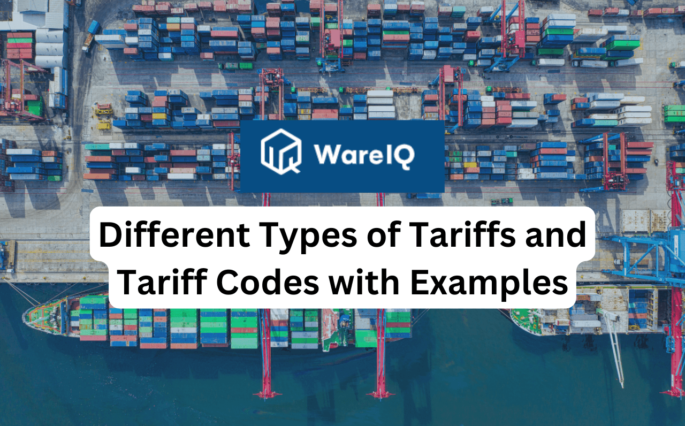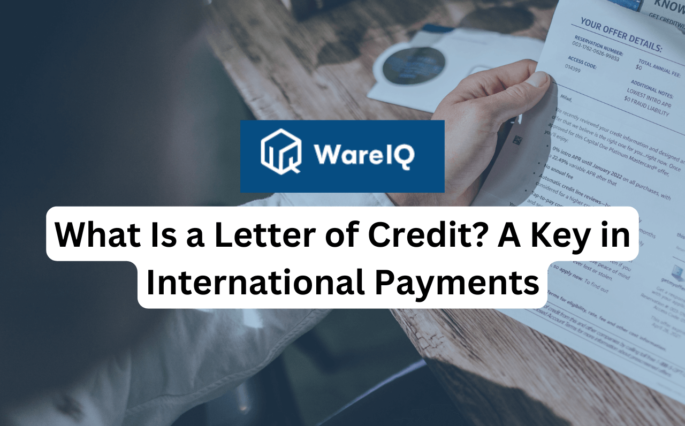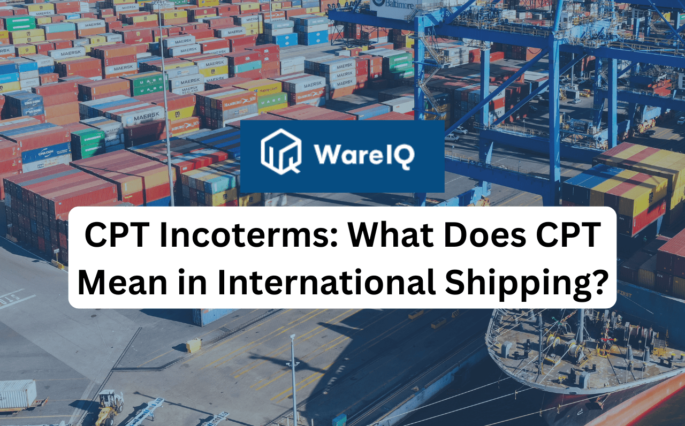Marketplace Fulfillment Explained: Benefits and Strategies


Marketplace fulfillment occurs when the platform on which you sell manages your order fulfilment procedure. This means they store it, pick it up, package it, ship it, and handle any returns. Some marketplaces, such as Amazon, will even handle customer care for you. All you have to do is deliver your stuff to the marketplace’s warehouse.
- Benefits of Marketplace Fulfillment
- How Marketplace Fulfillment Helps a Brand?
- Exploring Marketplace Channels for E-Commerce Success
- AWS Marketplace Channel
- Logistics Marketplace and its Advantage
- Marketplace Transactions and the Future
- Benefits of marketplace transactions
- International Marketplaces for Global Sales
- Evolution of Multichannel Selling
- Magento Order Fulfillment
- Benefits Of Utilizing A B2B Online Marketplace
- Strategizing B2B eCommerce Marketplaces
- 3PL Solutions for Ultra-Fast Order Fulfillment
- Rapid Expansion and Broad Audience Reach for Brand Growth
- Profitability as the Marketplace Fulfillment Advantage for Sellers
- Elevate Your Brand with Marketplace Fulfillment
- Conclusion
Benefits of Marketplace Fulfillment
- Faster Reach: Using a partner or depending on the marketplace itself for marketplace fulfillment helps a business to get its items in the hands of customers faster and gives a wider reach than if the company handled the fulfilment process alone.
- Effortless Logistics: The brand will not have to locate space for extra storage, pay warehouse fees, worry about transit difficulties, or waste time processing returns. All a brand needs to do is deliver the items to the marketplace hybrid fulfillment partner and sit back and watch the sales roll in.
- Global Expansion: Choosing to sell on a marketplace may also assist a business in expanding to new or even worldwide markets without having to pay for foreign warehouse management or ship items to foreign countries since most marketplaces have local distribution centres.
- Reputation Leverage: Furthermore, selling on a marketplace allows your brand to borrow the marketplace’s reputation. If a customer trusts Amazon and your items are available on the Amazon marketplace, the consumer is more inclined to trust your products as well.
- Enhanced Support: Customer service and refunds are also handled by some marketplaces. These two factors may have a significant influence on customer service, and being able to outsource such services can enhance a brand’s growth.
How Marketplace Fulfillment Helps a Brand?
Before deciding on a sales and fulfilment plan, you must first determine whether marketplace fulfilment makes sense for your company.
- Fulfilment Choice: The first decision to make is whether to outsource fulfilment operations. Self-fulfillment has a cheap initial expenditure and is easy to start, but it is more difficult to expand and can become expensive quickly as your company grows.
- Self-fulfillment: Self-fulfillment may make sense if you’re just getting started with your brand and want to test the waters, or if you want complete control over all aspects of fulfilment, including packaging and customer care.
- Marketplace Alignment: If the marketplace is your primary route of business, relying on it for fulfilment may be advantageous. However, if you already have regular sales and want to expand, it may hinder your capacity to sell and fill through other channels.
- Third-Party Efficiency: Using a third-party partner for omnichannel, including marketplace fulfilment, lets a brand to deliver its items to customers as fast and easily as possible, allowing the company to focus on growing the business, promoting, and improving customer happiness.
Exploring Marketplace Channels for E-Commerce Success
Here’s a table summarizing different marketplace channels:
| Marketplace Channel | Description |
|---|---|
| Amazon | Largest online retailer, offers fulfillment services (FBA), wide customer base, global reach |
| Etsy | Specializes in handcrafted and unique items, appeals to niche markets |
| eBay | Auction-style and fixed-price selling, diverse range of products from new and used goods |
| Social media platform, increasingly used for e-commerce through posts and stories | |
| Facebook Marketplace | Online marketplace within Facebook, allows buying and selling locally |
| Magento Marketplace | Platform for e-commerce websites, supports extensions and modules for additional functionality |
Marketplace channels are various platforms that facilitate trade. Platforms such as Instagram and Facebook, as well as channels such as Amazon, Etsy, and eBay, are examples of marketplace channels. A marketplace channel is a website where you may sell your stuff. Product-focused or content-focused marketplace channels are frequently distinguished. markets that rely on content are sometimes referred to as “modern marketplaces.”
Every marketing channel is not appropriate for every product. Handcrafted and one-of-a-kind things, for example, do well on marketplaces like Etsy and TikTok, but products that appeal to a larger audience may do well on Amazon or Walmart.
Buyers look for things they want to buy rather than a specific brand they want to buy from since these marketing channels provide a wide choice of products.
For example, if your eCommerce company offers surfing shirts, your loyal clients may visit your website on a frequent basis to see what new shirts you have in stock. A buyer who has never heard of your business may come across you on TikTok, Amazon, or Google Shopping by searching for “Florida surfing shirts.” This allows you to reach out to new clients who might not be aware of your business otherwise.
AWS Marketplace Channel
Transactions through the marketplace channel amounted to nearly 40% of sales for Amazon, the largest online retailer, in 2012, up from 30% in 2009.
- Amazon has argued that the new marketplace channel and traditional resellers may complement one another; for example, in the context of book sales, the advent of the marketplace channel provides a “service to readers that allows them to explore new authors and areas of interest.”
- As a result, both Amazon and publishers stand to win in the long term from this practice.
- The AWS Marketplace Channel streamlines the way AWS Partners collaborate to offer software.
- The AWS Marketplace Channel may be used by both ISVs and Channel Partners to broaden their reach, speed transaction closure, reduce expenses, and provide value to AWS customers.
Channel Partners can use the AWS Marketplace to list professional services and resale software. These advantages include simpler procurement, customised pricing, payment schedules, and terms, and providing end clients with end-to-end business solutions.
Logistics Marketplace and its Advantage
A logistics management marketplace is a platform that integrates a large number of transport and distribution firms (couriers), with the option of using their services. Logistics marketplace services provide your organisation with a number of benefits, including more efficient administration and delighted clients.
Optimisation of freight transit and distribution: Using a logistics marketplace makes analysing cargo capacity, costs, or route coverage easier than manually selecting a logistics provider. Instead of examining each offer individually, you may compare price sheets, services, and benefits of several couriers in one spot.
- Automated Efficiency: The automation of procedures distinguishes an efficient and competitive e-Commerce. Using a logistics services marketplace, you may save time by creating provider pre-selection criteria that use various couriers based on the customer’s location or the goods transported.
- Unified Tracking: Even if you employ many couriers, you do not need to visit each one’s website to follow your company’s shipments separately. You may record each change in the status of a cargo from a logistics marketplace and update your customers in real-time. As a result, there is the option of leaving a part in the e-Commerce itself where clients may check the progress from the company’s website.
- Simplified Operations: A logistics marketplace contains features such as bulk order loading using Excel and the generation of freight removal receipts. As a result, you won’t have to use separate platforms for each work.
- Comprehensive Insights: Using a logistics marketplace gives you powerful reporting on your shipments, allowing you to have complete control over the entire process and monitor it from a single location.
Marketplace Transactions and the Future
Today’s digital marketplaces are thriving as a result of advancements in connection, the need for ease, and real-time personalisation. Online buying and selling have never been simpler.
Marketplace transactions have moved to the forefront of people’s minds as patterns have changed. The move from classifieds to full-stack marketplaces in order to grab a larger share of the transaction is accelerating. And is more significant to some than others. Those who miss the boat will face an uphill struggle later on. Initially, the classifieds operating model was asset-light, with minimal income per user. Marketplace transactions have remained largely asset-light, albeit with increasing take rates, as the business has matured. When this is combined with economies of scale and penetration density, a plethora of transactional opportunities emerge.
To serve a diverse range of clients, online markets often allow payments via a variety of methods. Depending on what you’re offering, you may set up these payments to be recurring or split instalments.
Benefits of marketplace transactions
- Transparent Revenue Sharing: You can divide funds among numerous parties participating in marketplace transactions, such as buyers and sellers. This means you may distribute income to partners while maintaining transparency and accuracy.
- Automated Disbursements: You may automate the allocation of funds to the many parties involved, eliminating the need for laborious computations and disbursements. Custom payment routeing options are also available with integrated systems such as Checkout.com.
- Efficient Partner Payouts: Split payments make it simple to enrol and maintain a large number of sellers or providers since funds may be distributed automatically based on specified criteria or commission agreements. This should all be spelt out in the contract
International Marketplaces for Global Sales
Customers may browse several sites, select the things they need, and purchase them using a number of ways, while buyers post the products they wish to sell and provide crucial information about the item, such as size, measurements, materials, use cases, and more. These marketplaces often provide a diverse selection of items and services, as well as features that enable the exchange of goods and services between nations, such as currency conversion and cross-border delivery. Amazon, Alibaba, and eBay are prominent instances of transnational markets.
Businesses may reach new clients in other countries by selling on international marketplaces, boosting their customer base and potential income. Most international marketplaces have millions of users worldwide, so merchants who post their things on these platforms will quickly have access to a much larger pool of prospective buyers.
Evolution of Multichannel Selling
- Previously, multichannel selling was restricted to in-store encounters, catalogues, and phone or email transactions.
- With multi-channel selling, customers may shop and buy through any channel they like.
- For example, a manufacturer selling to a few wholesalers may have sent them a catalogue.
- Following that, wholesalers would need to contact the manufacturer and place an order over the phone or via email.
- This is a time-consuming process with a lot of paperwork that is prone to mistakes and misunderstandings!
- With smart marketing and a well-designed website, retailers may now attract a large number of visits to their website and convert a significant portion of that traffic into paying customers.
Magento Order Fulfillment
While Magento 2 does not provide solutions for all order fulfilment processes because it is primarily a software platform that allows customers to build websites, users can fulfil Magento 2 marketplace orders by performing tasks such as order processing and automating processes through API integrations.
We advocate working with a 3PL fulfilment business like WareIQ, which delivers the whole spectrum of fulfilment services such as inventory management, picking and packaging, delivery to the consumer, and reverse logistics in one centralised platform, for a more coherent experience.
Furthermore, customers may link WareIQ with the Magento 2 marketplace for a more smooth experience. Users must assess their needs and financial capabilities before partnering with the finest fulfilment business for them.
For buyers, sellers, and wholesalers, B2B online marketplaces are the most efficient and goal-oriented trade platforms. Many businesses are looking for the finest B2B marketplaces that can provide them with a variety of features, prices, and services that may help them grow swiftly. As a result, such platforms are widely used and provide excellent potential for growth and sales.
Benefits Of Utilizing A B2B Online Marketplace
- Digital Catalog Advantage: By digitising your whole ecommerce catalogue, you will be leagues ahead of many of your competitors, who still rely on antiquated in-person B2B sales tactics. Furthermore, putting your things online for viewing increases your chances of engaging with potential buyers and generating major sales.
- Streamlined B2B Connections: Numerous B2B procurement specialists are already actively conducting business through the biggest B2B marketplaces. B2B eCommerce marketplaces provide customers with the comfort and trust they require by interacting with and purchasing from numerous verified and reliable providers on a single centralised platform.
- Affordable Entry Point: Regardless of the platform’s revenue model or seller fee structures, the initial cost to use a B2B online marketplace is frequently low and accessible to businesses of all sizes. It also provides suppliers with the opportunity to reduce operational expenses.
- Seamless Setup: B2B marketplaces provide a uniform user experience as well as an intuitive seller interface where you can rapidly load your company and product information to get your online business up and running. eCommerce shipping, CRM, product management, and payment services are all examples of marketplaces.
- Data-Driven Decisions: When you manage your items using a unified online interface, eliminating out-of-date inventories and SKUs is easier than ever. Your own sales information may be easily obtained via a B2B online marketplace to help guide your product selection or product creation.
Strategizing B2B eCommerce Marketplaces
- Consider purchasers are focused on margins across distinct B2B eCommerce marketplace strategies.
- That is the heart of their operation. Furthermore, they are aware that your pricing may reduce their profit margins.
- B2B purchasers are worried about the item’s quality, predictability, and the prospect of providing them with a competitive advantage both now and in the future.
- When trading on your platform, a B2B buyer has a rational, multi-level consideration set.
- Customers’ perspectives are critical while developing a B2B eCommerce marketplace strategy. Make friends with your customers.
- Do more than just monitor the data generated by your system. Contact them direct fulfillment through video chats, phone conversations, emails, and texts to set up a meeting.
- Social media may also be used as a listening device.
- As a consequence, sales teams may better understand their clients’ demands and adapt their business models as a result of B2B eCommerce marketplace methods.
When compared to a traditional store, an online store vs marketplace takes relatively less investment. The principal areas of investment are website construction and upkeep, marketing, and storage. Marketplaces, as opposed to online stores, need investment in several areas. Because you have a range of suppliers and commodities, you may ask them to handle their own stock and product listings, saving you money and time.
Because there are additional fees associated with keeping and shipping the product, an online store is the best option for individuals looking to sell their inventory but only have access to cash, whereas a marketplace is best for retailers fulfillment who want all of the benefits and exposure that come with selling on a marketplace like Amazon or Flipkart.
If you need to help fulfilling wellness eCommerce orders, regardless of whether you sell on an online shop or a marketplace, WareIQ can help. WareIQ is a logistics and fulfilment software that integrates easily with over 20 online marketplaces and direct-to-consumer websites.
3PL Solutions for Ultra-Fast Order Fulfillment
Fast shipping is a critical necessity in today’s eCommerce environment, with most big companies offering same-day and next-day deliveries. Fortunately for users looking to fulfil WooCommerce orders, 3PL eCommerce companies provide some of the fastest and most competitively-priced shipping in the industry, resulting in an improved delivery experience for their customers without having to worry about ecommerce logistics, transportation delays, and other errors that may occur.
- When using a 3PL fulfilment business to deliver WooCommerce purchases, consumers have access to highly customizable packaging.
- Rather than being forced to conform to the rigid requirements of traditional eCommerce platforms, 3PL companies offer a diverse range of materials, designs, themes, and options, allowing users to customise exactly what they want and ensure that their brand is front and centre when a customer opens their delivered package.
- Customers can satisfy Amazon purchases in two ways: Fulfilment by Amazon (FBA) and Fulfilment by Merchant (FBM).
- FBA refers to outsourcing the complete retail fulfilment process to Amazon, whereas FBM refers to selling items on Amazon but fulfilling Amazon orders on your own.
For all intents and purposes, these are the procedures you must follow in order to fulfil Amazon orders:
- To optimise your business tactics, perform research on each product to determine its demand, competition from comparable items, pricing buyers are willing to pay, and penetration of that product in the Amazon marketplace.
- You must collaborate with a supplier who can create your items at the proper cost/quality ratio.
- The final items can then be shipped directly to Amazon’s warehouses.
- For each sort of offering, product listings must be prepared with marketable descriptions, good images, and precise metrics such as features and physical specifications.
- You must generate buzz around your items and advertise them to be as appealing to your target audience as possible in order to distinguish your products from the plethora of rivals on the Amazon marketplace.
- You must monitor each order that arrives and manage inventory levels and listings so that the appropriate quantity of inventory is always accessible, based on consumer demand. After receiving an order, you may leave the rest to Amazon.
WareIQ’s Jiomart order fulfilment platform easily connects to Jiomart to deliver end-to-end Jiomart order fulfilment services to Jiomart retailers. Using WareIQ’s nationwide fulfilment and last-mile delivery network, you can deliver Jiomart orders the same or the next day. D2C fulfillment and Marketplace integration is supported by WareIQ’s jiomart order fulfilment platform. Furthermore, WareIQ’s team of fulfilment professionals assures swift order processing and fulfilment with 0% mistakes, ensuring the correct item is shipped to end consumers as soon as possible.
Rapid Expansion and Broad Audience Reach for Brand Growth
Despite the fact that the introduction of eCommerce marketplaces has given rise to several options, choosing to sell on Amazon continuously allows firms to grow at a quicker rate than if they choose to join another eCommerce selling platform or sell on their own. It also provides businesses with additional visibility to their target audience as well as potential customers in remote or rural areas. Many eCommerce analysts believe that selling on Amazon not only delivers numerous benefits but is also critical for the company’s long-term existence. Amazon is a corporation that is rapidly expanding as the number of individuals who have Internet connections and are becoming accustomed to using it grows.
Profitability as the Marketplace Fulfillment Advantage for Sellers
- High commission costs can sometimes hinder a retailer’s capacity to be profitable, therefore cheap rates can be a game changer, particularly for smaller firms that rely on much narrower margins to stay afloat.
- Similarly to the collection of a commission on each product sold, most eCommerce selling platforms impose a collection charge as well as a set of fixed fees on each product sold.
- After deducting all of these expenses, merchants are left with little more than crumbs after putting in the effort to research and design a product that finally yields the sale.
- Fortunately, there are no charging fixed or collection costs for shops that sell on Meesho or shopify fulfillment service, allowing them to keep more money in their own pockets.
- With most consumers having an active presence on social media sites such as Instagram, Facebook, and LinkedIn, among others, it is prudent to leverage the power of these channels to successfully express your brand image and product offers to potential customers.
- A Meesho vendor who pays attention to their social media page will almost certainly have to market their items more than one who does not. Another advantage is that publishing on these apps is free, allowing Meesho vendors to experiment to see what works and what doesn’t.
Elevate Your Brand with Marketplace Fulfillment
- As a company owner, your major aim is to promote and build your brand, which allows you to make cash and, in turn, boosts your chances of becoming a profitable Seller. Even if you have a prominent position for your business in a crowded area, your reach will be restricted.
- What are your options? Start selling on online marketplaces such as Flipkart, Amazon, Myntra, Shopify and Beauty. They are given various perks based on an examination of the seller’s performance.
- These advantages are thought to be directly proportionate to the sellers’ performance, which is significant from the seller’s perspective.
- For example, The better the seller performs on Flipkart, the more benefits he will obtain. It is categorised as a Bronze, Silver, or Flipkart Gold Seller (prime-tier) based on performance. This rating is valid for 90 days before being upgraded if you satisfy all of the criteria for the next tier.
- It allows vendors to jump on board and avoid being left behind due to a failure to adapt. When you sell on Flipkart, you have two options for fulfilling orders: Flipkart Fulfilment or Self-Ship Fulfilment. You may leverage Flipkart’s current D2C fulfilment infrastructure, which includes a countrywide network of warehouses and fulfilment centres, road, rail, and air transportation capabilities, reverse logistics services, 10,000+ delivery partners, and much more.
- The “Flipkart Assured Badge” appears on every product from a merchant whose goods have been approved by Flipkart.
- On the other hand, Before allowing a company to utilise the platform, Myntra goes through a rigorous screening procedure before allowing them to begin selling on Myntra. If you have a product and want to sell it on Myntra, you must first create an account and list your items in order to become a Myntra seller.
Conclusion
Marketplace such as magneto fulfillment occurs when the platform on which you sell manages your order fulfilment procedure. All a brand needs to do is deliver the items to the marketplace micro fulfillment partner and sit back and watch the sales roll in. Using a partner or depending on the marketplace itself for business marketplace fulfillment helps a business to get its items into the hands of customers faster.
Marketplace channels are various platforms that facilitate trade. Platforms such as Instagram and Facebook, as well as channels such as Amazon, Etsy, and eBay, are examples of marketplace channels. Marketplace transactions have moved to the forefront of people’s minds as patterns have changed. Marketplace transactions have remained largely asset-light, albeit with increasing take rates, as the business has matured.








